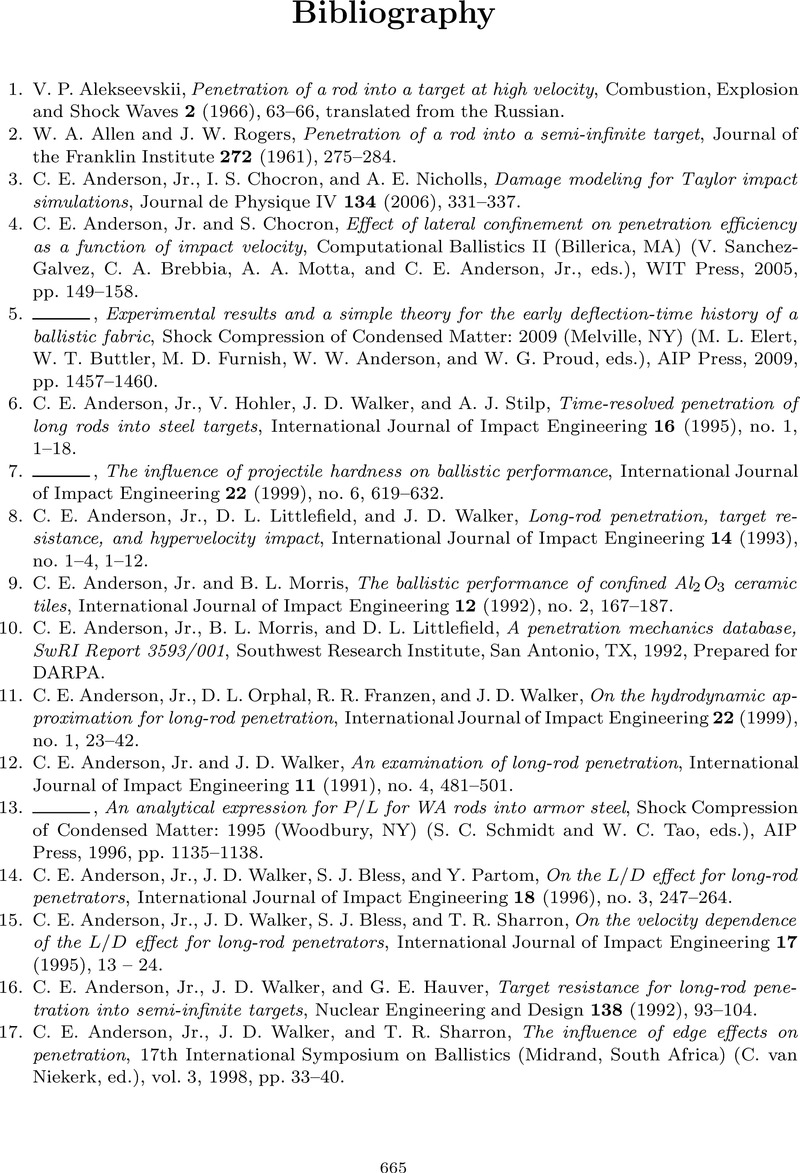Book contents
- Frontmatter
- Dedication
- Contents
- Preface
- 1 Introduction
- 2 Conservation Laws and the Hugoniot Jump Conditions
- 3 Elastic-Plastic Solids
- 4 Mechanical Waves, Shocks, and Rarefactions
- 5 Elastic-Plastic Deformation and Shocks
- 6 The Cavity Expansion
- 7 Penetration
- 8 The Tate—Alekseevskii Model
- 9 The Crater and Ejecta
- 10 The Walker—Anderson Model
- 11 Finite Targets
- 12 Nondeforming (Rigid) Impactors
- 13 Yarns, Fabrics, and Fiber-Based Composites
- 14 Rotation, Stretch, and Finite Elasticity
- Appendix A Conservation Laws and Curvilinear Coordinates
- Appendix B Units, Conversions, and Constants
- Appendix C Elastic, Shock, and Strength Properties of Materials
- Appendix D Figure Acknowledgments
- Bibliography
- Index
- References
Bibliography
Published online by Cambridge University Press: 01 April 2021
- Frontmatter
- Dedication
- Contents
- Preface
- 1 Introduction
- 2 Conservation Laws and the Hugoniot Jump Conditions
- 3 Elastic-Plastic Solids
- 4 Mechanical Waves, Shocks, and Rarefactions
- 5 Elastic-Plastic Deformation and Shocks
- 6 The Cavity Expansion
- 7 Penetration
- 8 The Tate—Alekseevskii Model
- 9 The Crater and Ejecta
- 10 The Walker—Anderson Model
- 11 Finite Targets
- 12 Nondeforming (Rigid) Impactors
- 13 Yarns, Fabrics, and Fiber-Based Composites
- 14 Rotation, Stretch, and Finite Elasticity
- Appendix A Conservation Laws and Curvilinear Coordinates
- Appendix B Units, Conversions, and Constants
- Appendix C Elastic, Shock, and Strength Properties of Materials
- Appendix D Figure Acknowledgments
- Bibliography
- Index
- References
Summary

- Type
- Chapter
- Information
- Modern Impact and Penetration Mechanics , pp. 665 - 674Publisher: Cambridge University PressPrint publication year: 2021



